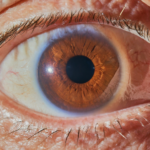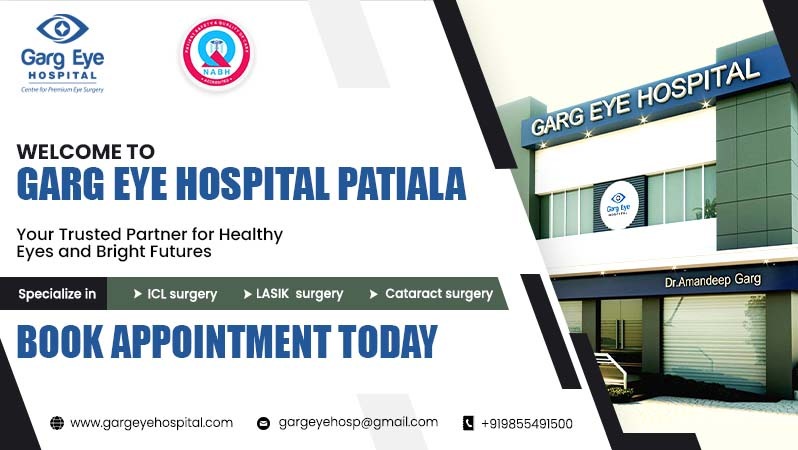What Are The Top 10 Most Common Symptoms Of Cataracts? – Cataract is a common eye condition that is characterized by the clouding of the eye’s natural lens, leading to blurred vision and vision impairment. This cloudiness is due to proteins in the lens clumping together, reducing its transparency and this can also cause colors to appear duller. Cataracts can affect one or both eyes and are commonly associated with aging. However, other factors such as diabetes, prolonged exposure to ultraviolet light, smoking, and certain medications can also contribute to the development of cataracts. Here we explain what are the top 10 most common Symptoms of Cataracts.
Cataracts can cause blurry vision, glare sensitivity, and difficulty seeing at night. As they worsen, tasks like reading and driving become challenging. The good news? Cataract surgery is a safe and effective solution. During the procedure, the cloudy lens is replaced with an artificial one, restoring clear vision and improving quality of life. It is very crucial to treat your cataract condition before it gets worse and try to understand the little symptoms and changes in your vision. Here we provide the answer to the What Are The Top 10 Most Common Symptoms Of Cataracts?
Most 10 Common Symptoms of Cataracts
- Blurry Vision: Vision becomes cloudy or blurry, making it difficult to see clearly.
- Faded or Yellowed Colors: Colors may appear faded or yellowed, impacting the perception of the surrounding environment.
- Difficulty Seeing at Night: Reduced ability to see clearly in low-light conditions, such as at night.
- Glare and Halos Around Lights: Increased sensitivity to glare, with the appearance of halos around lights, especially at night.
- Sensitivity to Light: Heightened sensitivity to light, making it uncomfortable to be in brightly lit environments.
- Frequent Changes in Prescription: The need for frequent changes in eyeglass or contact lens prescriptions due to vision changes.
- Double Vision: Seeing double in the affected eye, can affect depth perception and overall visual comfort.
- Poor Depth Perception: Difficulty in accurately judging the distance and depth of objects.
- Needing Brighter Light for Activities: Requiring more light than usual for reading, performing tasks, or engaging in activities.
- Poor Night Vision: Difficulty seeing clearly in low-light conditions, impacting nighttime activities and driving.
Different Types of Cataracts
The following types of the Cataracts are given Below:
Pediatric Cataracts- Pediatric cataracts impact babies and children, either from birth (congenital) or developing later. They often have a genetic link but can also result from eye injuries or other eye conditions. Prompt treatment is crucial for babies and children with pediatric cataracts to prevent issues such as amblyopia (lazy eye).
Traumatic Cataracts- Traumatic cataracts form when something injures the eye. Treatment for this sort is more complicated since structures around the focal point may too require repair. This complexity arises due to the potential need for additional repairs to the eye’s structures beyond the lens itself.
Secondary Cataracts- These cloudy patches form on your lens capsule, or the membrane that covers your lens. Another term for this condition is back capsular opacification. It’s a common but effortlessly treatable complication of cataract surgery. This clouding of the thin membrane surrounding the implanted intraocular lens can cause fuzzy vision, but it can be easily treated through a quick laser procedure.
How to treat Cataracts
| Step | Description |
|---|---|
| Pre-operative consultation | Your ophthalmologist will discuss your medical history, symptoms, and expectations. They will also measure your eye and choose the most suitable intraocular lens (IOL) for you. |
| Day of surgery | You will likely be awake during the procedure but will receive numbing eye drops or an injection to prevent discomfort. Medication might also be given to help you relax. |
| Creating incisions | The surgeon makes tiny incisions (cuts) with a blade or laser near the edge of your cornea, the clear dome at the front of your eye. |
| Lens breakdown | Using a small probe inserted through the incisions, the surgeon breaks up the cloudy lens with ultrasound waves (phacoemulsification). |
| Lens removal | The broken-up cataract pieces are then suctioned out through the incisions. |
| IOL placement | The new, artificial lens (IOL) is folded and inserted into your eye through the incisions. The lens unfolds and takes its permanent position within your eye. |
| Incision closure | The incisions are typically self-sealing and do not require stitches. |
| Post-operative care | You will receive instructions on medication use, eye drops, and follow-up appointments to monitor healing. |
Leading Eye Hospital to Treat Cataracts in India- Garg Eye Hospital
Garg Eye Hospital is a leading eye care center in India, offering a wide range of eye care services and surgeries, including blade-free cataract surgery. The hospital is known for its state-of-the-art facilities and advanced treatments for various eye problems, making it a trusted choice for those seeking quality eye care. This hospital is NABH accredited and provides exceptional eye care at affordable prices.




